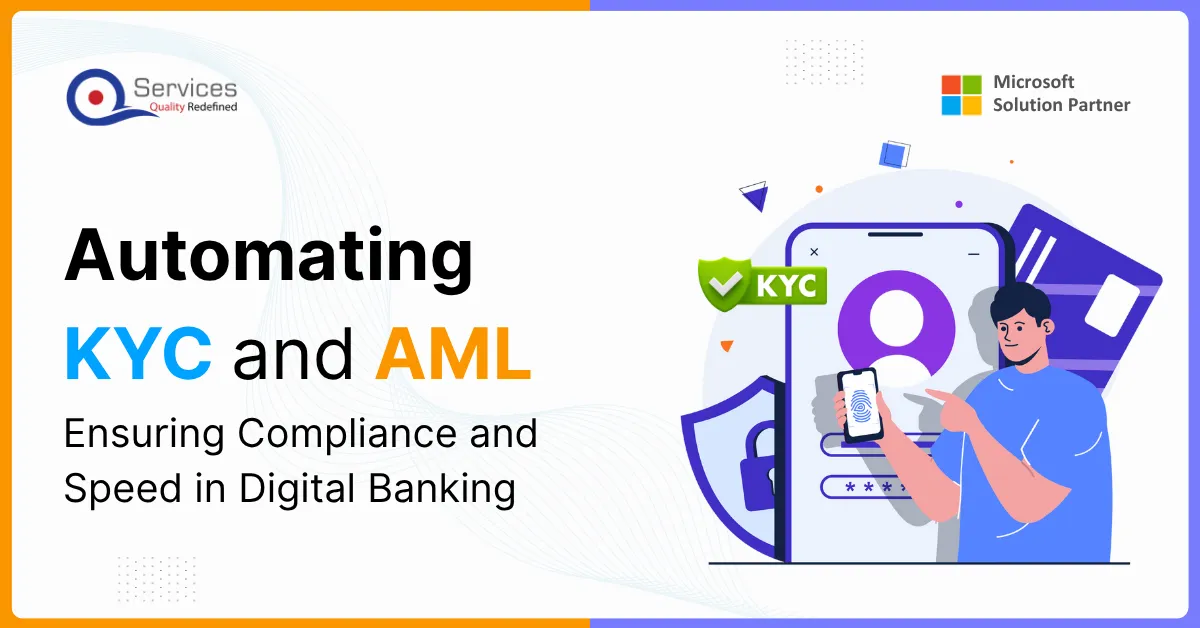
Home » Migrating Legacy Applications to .NET Core: A Step-by-Step Approach

As an experienced .NET developer, I have the potential to witness the significant evolution of Microsoft`s improvement framework over the years. From its initial launch to its cutting-edge state, the framework has been handed via non-forestall transformation, adapting to the changing desires of developers and companies alike. Among the pivotal moments in this journey, the transition to .NET Core is mainly extensive. This modern, open-source, cross-platform framework has modified our improvement practices, supplying remarkable Performance, flexibility, and scalability. It has created new possibilities, specifically for corporations seeking to modernize and defend their legacy packages for the future.
.NET development initiated with the original framework that was mainly focused on Windows, with minimal adjustments for various environments. As technology advanced, the demands for software creation also evolved. Programmers looked for more adaptable solutions that could function across different platforms and settings, which resulted in the emergence of .NET Core. This shift not only represented a break from the conventional .NET framework but also embraced open-source development principles and cultivated a dynamic community of contributors and users.
The result is a framework that is not only robust, but also continuously improved through community feedback and collaboration. Migrating legacy applications to .NET Core is more than just a technical improvement; it’s a strategic decision that can revitalize systems struggling to meet current needs. Legacy applications often face performance bottlenecks, high maintenance costs, and difficulty integrating with modern technologies. By migrating to .NET Core, enterprises can breathe new life into these systems, helping them stay relevant and support current business objectives.
.NET Core is designed to be lightweight and efficient, making applications more responsive and better able to manage many simultaneous requests in a rapidly evolving digital environment.
Compatibility with various operating systems, including Linux and macOS, allows businesses to make the most of their current hardware and cloud resources, resulting in significant cost savings.
Built with cloud deployment in mind, .NET Core seamlessly integrates with important cloud offerings like Microsoft Azure, improving scalable programs that can adapt to fluctuating workloads.
In this article, I will guide you through the transition to .NET Core, sharing insights from my experiences and the developer communities. You will discover an all-encompassing, step-by-step manual that addresses everything from prepping your
codebase to tackling compatibility challenges and tapping into the robust tools and libraries .NET Core provides. Ultimately, you will gain a solid comprehension of the technical journey, recommended practices, and possible obstacles to sidestep, ensuring a seamless and productive migration, no matter the scale of your application.
Before we explore the how let’s take a moment to consider the why. .NET Core offers several key advantages:
Migrating from legacy structures to .NET Core can be streamlined with several tools that automate and simplify the migration. Here are some essential tools and techniques to ensure a smooth migration:
This tool assesses your current .NET Framework code and generates a report detailing which APIs are compatible with .NET Core. It helps pinpoint potential compatibility challenges early in the migration journey.
This command-line utility assists in upgrading your .NET Framework applications to .NET Core. It automates numerous manual tasks involved in the migration, including updating project files, adjusting dependencies, and modifying code.
Visual Studio has built-in tools for migrating projects to .NET Core. It helps update project files, resolves dependencies and provides debugging and testing capabilities throughout the migration process.
The .NET Core Command-Line Interface (CLI) provides commands for creating, building, and migrating applications. It can also initiate new .NET Core projects, restore dependencies, and compile applications directly from the command line.
NuGet Package Manager plays a key role in managing libraries and dependencies during migration. Some of your older libraries may not be compatible with .NET Core, so NuGet helps you identify unsupported packages and replace them with alternatives that work with .NET Core.
Various third-party solutions, such as DevOps Migration Tools and ReSharper, can aid in analyzing and refactoring code for compatibility with .NET Core, especially in more complex legacy applications.
Docker packing containers may be hired to isolate and run your legacy software alongside .NET Core applications, presenting a handy manner to check the new .NET Core software in production-like surroundings earlier than finishing the migration.
CI/CD platforms such as Azure DevOps and GitHub Actions play a vital role in streamlining the testing and deployment of applications that have been migrated. They ensure that code modifications function seamlessly in legacy and contemporary environments.
These tools are essential for restructuring your code to make it more modular and cleaner. This is especially important when migrating from legacy systems to modern frameworks like .NET Core.
Tools like dotnet trace, dotnet monitor, and dotnet-gcdump are invaluable during the migration journey, assisting in profiling and diagnosing your application’s performance within the .NET Core ecosystem.
When migrating legacy applications, one size doesn’t fit all. In my experience, two strategies have proven particularly effective:
Incremental Approach: Move components incrementally to .NET Core, one at a time.
Hybrid Strategy: Keep parts of your application in .NET Framework and migrate other parts to .NET Core.
Let’s explore how to implement these strategies while addressing familiar challenges.
After assessing your legacy applications, the next step is to create a migration strategy. This strategy should clearly define the scope of the migration, set a timeline, and identify the key stakeholders involved. In general, there are two main approaches to migrating legacy applications to .NET Core:
Lift and Shift: This straightforward method involves transferring the legacy application to .NET Core without significant alterations. The goal is to keep code changes minimum while moving directly to the new platform.
This approach requires fully redesigning legacy systems to exploit .NET Core capabilities. This can include breaking monolithic applications into microservices, improving the code base for better Performance, and adopting cloud-native architectures.
Your choice should be guided by the complexity of the legacy system, the resources available, and your long-term objectives
Get free Consultation and let us know your project idea to turn into an amazing digital product.
Start with an extensive assessment of your application. Identify its dependencies, any third-birthday birthday celebration libraries in use, and possible compatibility issues. Create an extensive inventory of your codebase, addressing elements such as:
With those statistics in hand, growth is a migration roadmap. Prioritize components based mostly on their complexity and impact on the overall system.
Create a new .NET Core project and set up your development environment. This is where you’ll start to appreciate .NET Core’s cross-platform capabilities. I remember the first time I ran a .NET application on my MacBook—it felt like breaking free from long-standing constraints!
One of the most challenging aspects of migration is database compatibility. Here is how to approach it:
Use Entity Framework Core: If you use Entity Framework, transition to Entity Framework Core. It offers improved performance and cross-platform support.
Update your data access layer: Rewrite database queries to use async/await patterns for better performance.
Handle SQL Server-specific features:
If you use SQL Server-specific features, consider using the Microsoft. Data.SqlClient package for compatibility. .
This step is where the fundamental transformation happens. Some key areas to focus on:
Dependency Injection: .NET Core affords integrated support for dependency injection. Revise your code to take advantage of this capability, which will enhance modularity and maintainability.
Once migrated, concentrate on refining the application:
After migrating your application to .NET Core, the next step is to improve performance and scalability to ensure efficiency and a seamless user experience. Key strategies to achieve this include:
Utilize tools like dotnet-trace and dotnet-counters to observe runtime behavior and identify areas using excessive resources. Concentrate on optimizing code or configurations that affect performance the most.
Integrate asynchronous patterns, like async/await, to manage greater loads effectively. This method enables tasks to run concurrently, decreasing response times and improving system throughput.
Examine and enhance all database interactions to remove inefficiencies. Actions include:
Eliminate unnecessary dependencies, tidy up unused code, and optimize resource-intensive operations to lessen overhead and enhance performance.
Perform load tests using tools such as JMeter or Azure Load Testing to simulate real-world usage and make configuration changes as needed. After deployment, monitor your application using tools such as Application Insights to monitor performance and proactively troubleshoot issues.
With the migration and optimization finalized, the next step is to test and deploy your application carefully and thoroughly. This guarantees the application is stable, dependable, and prepared for production. Here’s a comprehensive breakdown of the process:
Examine each feature to verify that all business logic operates as intended. Confirm edge cases and ensure new implementations haven’t unintentionally disrupted existing functionality.
Evaluate how various application modules communicate with one another and external systems, such as APIs, databases, or third-party services. This ensures seamless interaction throughout the entire stack.
Replicate high-traffic scenarios to evaluate how the application performs under stress. Utilize tools like Apache JMeter or Gatling to pinpoint bottlenecks and resolve potential issues affecting reconfigurability.
Deploy the application in a staging environment that closely resembles production. This enables you to assess the deployment process and discover environment-specific problems before impacting end-users.
Employ monitoring tools to oversee application health and performance in staging. Address any errors or inefficiencies before moving to production.
Initiate a gradual deployment approach, such as making the application available to a limited audience or geographical area. This reduces risk while collecting real-world feedback.
Despite the clear benefits, migrating legacy .NET Framework applications to .NET Core presents some challenges. Here are some common roadblocks you may encounter during the migration process:
One of the primary challenges is ensuring that the existing codebase is compatible with .NET Core. The .NET Framework and .NET Core have different APIs, and certain libraries or components used in the legacy application may not be available or may function differently in .NET Core. This can lead to significant refactoring efforts to replace or rewrite incompatible code.
Many legacy applications rely on third-party libraries and components that may not have been updated to support .NET Core. Identifying these dependencies and finding appropriate replacements or updated versions can take time and require additional testing to maintain functionality.
Migrating to .NET Core may necessitate changes in the application architecture. For instance, if the legacy application is tightly coupled or monolithic, adopting a microservices architecture in .NET Core may be beneficial. This shift can introduce complexity and require reevaluating how different components interact.
Development teams may face a learning curve when moving to .NET Core, mainly if they are accustomed to .NET Framework. Understanding .NET Core’s new features, tools, and best practices can take time, which may temporarily slow development.
Ensuring the migrated application functions correctly is critical. This involves extensive testing, including unit, integration, and user acceptance tests. The need for comprehensive testing can extend the migration timeline and require additional resources.
While .NET Core is widely known for its performance improvements, the migration process may initially introduce performance bottlenecks. Developers must profile their applications and optimize their code to achieve the desired performance levels, which can be complex and iterative.
The deployment model for .NET Core applications can differ significantly from that of .NET Framework applications. Organizations may need to adapt their deployment pipelines, hosting environments, and infrastructure to accommodate the new application, which can involve additional costs and resource allocation.
If the legacy software uses Entity Framework or different facts to get admission to technology that isn’t entirely well suited to .NET Core, migrating the facts to the layer may be a sizable challenge. This might also contain rewriting facts that get admission to code and ensure that database interactions.
Legacy applications may depend on obsolete databases or storage formats. Transitioning data to contemporary databases, such as SQL Server, PostgreSQL, or MongoDB, frequently requires supplementary procedures.
After thoroughly reviewing the benefits and obstacles in migrating legacy applications, we discuss how to migrate legacy applications to .NET Core effectively. The process involves several key steps and considerations that can significantly affect the success of the migration. First and foremost, evaluating your current legacy application entirely is essential. This includes understanding the architecture, dependencies, and technologies currently used. Identifying the core functionality and components of the application will help you determine which parts need to be preserved and which parts can be redesigned or replaced during the migration process.
During migration, it’s essential to focus on testing and quality assurance. Implementing an automated testing framework will help you identify issues early in the migration process and resolve them quickly. User Acceptance Testing (UAT) will also help ensure the migrated application meets user needs and expectations.
Conducting a comprehensive evaluation of your existing application before initiating the migration process is necessary. This assessment should encompass the following elements:
Develop a Migration Strategy
An effective migration strategy is critical to success. It details each step of the migration, from assessing dependencies to deploying the final product. A carefully designed plan helps reduce risk and minimize downtime. Make sure your team has the necessary expertise to manage the migration and that your strategy includes sufficient testing opportunities at each stage.
Begin with a Pilot Project
Rather than diving into a complete migration all at once, kick things off with a smaller, more straightforward module or feature of your application. This approach allows you to experiment with the migration process, resolve any challenges, and gather valuable insights to inform the larger project.
Update Dependencies and Libraries
A critical first step in the migration adventure is to refresh or update any old or incompatible libraries. For .NET Core, it’s crucial to confirm that every third-birthday birthday celebration library is like-minded or to seek options that align with the platform.
Refactor the Codebase
Although .NET Core retains much of the .NET Framework’s syntax, there are notable differences in APIs and namespaces. Refactoring the codebase will require rewriting certain sections to align with .NET Core’s architecture and to take full advantage of its performance enhancements.
Migrate the Database
Depending on your database technology, you may need to change how you store and retrieve your data. Ensure your setup is compatible with the latest Database Management Systems (DBMS) and take advantage of the updated platform’s new features.
Test, Optimize, and Deploy
After completing the migration, perform comprehensive testing across all application layers. This should include unit, integration, and performance tests to confirm that everything operates as intended. Optimize the application’s Performance and roll it out in phases to guarantee a seamless deployment.
Before you begin your migration, ensure that you have reliable backups. This precaution helps prevent data loss and application downtime that may occur during the migration.
Utilize the .NET Core Ecosystem
The .NET Core ecosystem has tools and frameworks to simplify your migration journey. Resources like the .NET Portability Analyzer and the .NET Upgrade Assistant are specifically designed to help you pinpoint migration challenges and offer practical solutions.
Focus on Essential Features First
Start by migrating your application’s maximum critical additives, then steadily address the less essential features. This method ensures that your center enterprise features stay operational while you navigate the migration process.
Keep an Eye on Performance After Migration
Once your application is live, monitoring its performance diligently is crucial. This involves tracking errors, fine-tuning the application based on actual user feedback, and swiftly addressing any issues that may come up.

Transitioning legacy programs to .NET Core is more than only a technical enhancement; it’s a critical flow closer to ensuring your software program infrastructure stays relevant. As agencies increasingly search for better flexibility, scalability, and Performance, moving from the traditional .NET Framework to the contemporary, cross-platform .NET Core framework has become a key approach for retaining an aggressive area in today’s swiftly evolving virtual environment. Although the migration adventure may also seem intimidating initially, with strategic making plans and execution, the rewards are significant. .NET Core brings several blessings: better Performance, decreased infrastructure expenses, and convenient cloud integration. These blessings are vital for groups aiming to stay nimble, reduce downtime, and serve a worldwide target market that expects faster and more reliable services. Additionally, the functionality to function programs throughout numerous Windows, Linux, and macOS systems unlocks new possibilities for optimizing current infrastructure and cloud assets.
In this guide, we have delved into the essential steps for migrating legacy applications, from evaluating your current codebase to fine-tuning for Performance and scalability within the .NET Core framework.
Migrating your traditional .NET Framework applications to .NET Core is a step towards modernizing your software infrastructure, reducing technical debt, and preparing your systems for future challenges. By following the steps outlined in this guide, your organization can achieve a seamless transition and improve your user experience and internal development processes. Ultimately, migrating to .NET Core is more than introducing a new framework. It represents a strategic step towards a more agile, innovative, and sustainable future for your applications. By leveraging the full power of .NET Core, your teams can focus on building and delivering faster, more scalable solutions that are better suited to meet the needs of an ever-changing business environment. Whether modernizing a small application or redesigning an extensive enterprise system, migrating to .NET Core unlocks new opportunities and drives long-term success.

Many banks experience delays in implementing automation projects due to several challenges, and obstacles in implementation can directly impact the efficiency and success of the automation model.

Digital banking has brought significant changes to financial institutions, allowing customers to access faster, more convenient services with ease. However, this shift has also shaken banks, as compliance standards, especially KYC (Know Your Customer) and AML (Anti-Money Laundering) have become stricter and more difficult to manage.

The rise of business process automation in the banking industry has attracted banks of all sizes. With proven results such as optimized operations, reduced errors, and fewer manual workflows, financial institutions, especially emerging banks, are increasingly adopting it to improve performance and scale efficiently.
Migrating to .NET Core offers benefits like improved performance, cross-platform support, enhanced security, and access to the latest features and updates.
.NET Core is cross-platform, modular, and optimized for modern development, while .NET Framework is Windows-only and monolithic.
Begin by assessing your current application, identifying dependencies, and planning the migration strategy.
Tools like the .NET Portability Analyzer, .NET Upgrade Assistant, and Visual Studio can assist in the migration process.
Ensure you have the latest .NET SDK installed, update your IDE, and create backups of your application.
Challenges include handling deprecated APIs, updating third-party libraries, and ensuring compatibility with new frameworks.
Identify deprecated APIs and find suitable replacements or workarounds in .NET Core.
The .NET Portability Analyzer helps identify APIs that are not supported in .NET Core and provides guidance on how to address them.
Update your project files to the new .NET Core format, including changes to the project structure and dependencies.
The .NET Upgrade Assistant is a tool that automates parts of the migration process, making it easier to upgrade your application to .NET Core.
Update or replace third-party libraries with versions compatible with .NET Core.
INDIA : F-190, Phase 8B, Industrial Area, Sector 74,
Mohali, India
CANADA : 55 Village Center Place, Suite 307 Bldg 4287, Mississauga ON L4Z 1V9, Canada
USA :2598 E Sunrise Blvd, Fort Lauderdale,FL 33304,
United States

Founder and CEO

Chief Sales Officer
